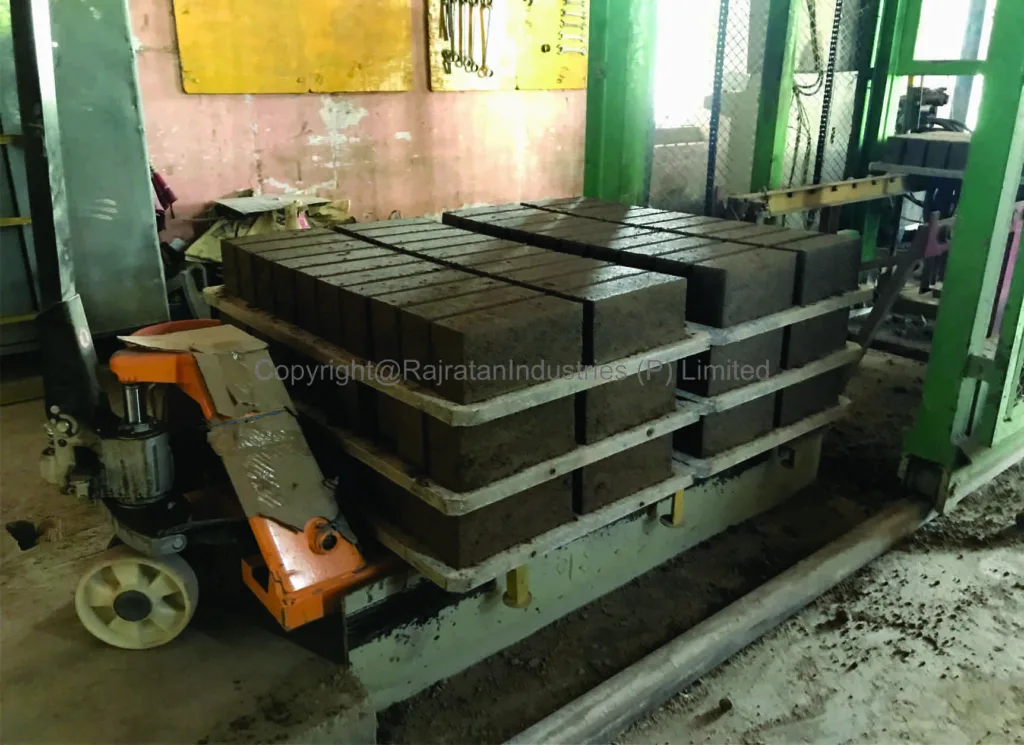Industries
Manufacturer and Supplier of PAC Pallets for Brick, Block, and Paver Manufacturing
Fly ash bricks are eco-friendly, durable, and cost-effective alternatives to traditional clay bricks. At Rajratan Industries, we are proud to support sustainable construction practices with our high-quality PAC Pallets, designed to enhance the manufacturing process of bricks, blocks, and pavers. Here’s a step-by-step guide to how fly ash bricks are made.
Step 1: Collection of Raw Materials
The essential materials used in fly ash brick production include:
- Fly Ash: Byproduct of coal combustion, obtained from power plants.
- Sand/Stone Dust: For added strength and binding.
- Cement/Lime: Used as a binder.
- Gypsum: Acts as a catalyst in the curing process.
Step 2: Proportioning and Mixing
The raw materials are mixed in specific proportions to ensure consistency in quality and strength. Generally, the ratio of fly ash, cement/lime, and sand/stone dust is carefully calculated based on the desired brick quality.
Mixing can be done manually or using automated machines for large-scale production. Water is added in controlled amounts to form a uniform mixture.
Step 3: Molding
The prepared mixture is fed into a fly ash brick-making machine. These machines compress the mixture into molds, forming bricks of uniform size and shape. High-pressure machines are often used to achieve compactness and strength.
Pro Tip: Using PAC Pallets during this step ensures smooth handling and prevents deformation during curing.
Step 4: Curing
After molding, the bricks are left to cure. This can be done in two ways:
- Steam Curing: Bricks are placed in chambers where steam is applied under controlled conditions for faster curing.
- Natural Curing: Bricks are kept in the open and sprayed with water regularly for 14–21 days.
Curing enhances the bricks’ strength and durability.
Step 5: Quality Testing
Before dispatching, fly ash bricks undergo quality tests to ensure they meet industry standards for:
- Strength
- Water absorption
- Size and shape uniformity
Step 6: Packaging and Storage
Once tested, the bricks are carefully stacked and packed using PAC Pallets, which provide stability during transportation and storage.
Why Choose PAC Pallets for Brick Manufacturing?
PAC Pallets from Rajratan Industries are designed to withstand the rigors of the brick manufacturing process. They offer:
- Durability: Long-lasting material ensures repeated use.
- Lightweight Design: Easy to handle and transport.
- Sustainability: Made from eco-friendly materials.
Need PAC Pallet Samples for Your Fly Ash Brick Plant
Want a Free Sample PAC Pallet? Call +91 9685927927 (Monday to Saturday, 10 AM to 6 PM)

